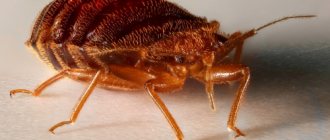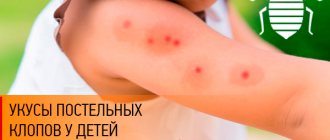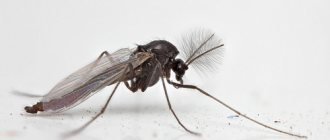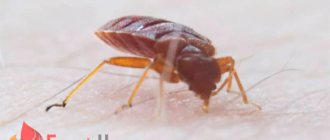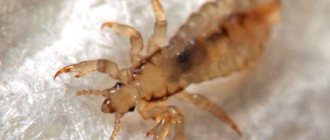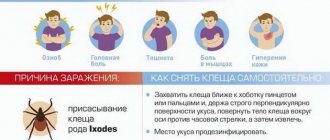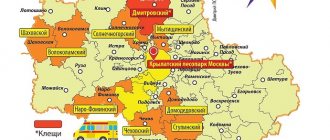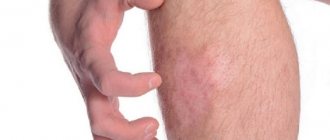The prevalence of allergic reactions is constantly increasing. More and more people are becoming sensitive to different protein structures. Very often, people are concerned about allergies to insect bites, which can lead to various adverse consequences. The disease, depending on the severity of sensitivity (sensitization), manifests itself both as local symptoms and systemically. Timely intervention allows you to avoid dangerous conditions. Therefore, people with such allergies should always be careful and have emergency supplies with them.
Why does an allergy to stings occur?
An allergic reaction is an increased immune response to foreign proteins that enter the human body. An insect bite can act in several ways:
- Getting poison into the blood;
- Ingestion of toxic saliva;
- Ingestion of particles from wings and other elements of the body (usually not through a bite, but through inhalation).
An allergic reaction to an insect bite depends on the type of organism and the amount of protein that enters the person. Many insects, such as mosquitoes, cause a local inflammatory response in every person. And hymenoptera such as bumblebees, wasps or bees can cause serious swelling and even shock.
Research methods
The study was carried out on the basis of a general clinical (complete blood count with leukocyte formula) and specific allergological examination of patients (questioning; collection of allergic, food, insect history; determination of the level of total immunoglobulin IgE in the blood serum of patients using the enzyme-linked immunosorbent assay using the diagnostic kit "Total IgE -ELISA" (Labmedtest, Russia). Determination of the levels of specific IgE in blood serum was carried out using the immunofluorescence reaction (IFL) method on the three-dimensional porous solid phase ImmunoCAP (Pharmacia Diagnostics AB, Switzerland). Determination of the levels of specific IgE was carried out to allergens of pyrolyphoid mites ( Dermatophagoides pteronyssinus
,
Dermatophagoides farinae
), insects (cockroach, mosquito, wasp venom, honey bee venom), seafood (shrimp), fish (cod, salmon), dog hair, cat hair, tree pollen mixture (birch, alder, hazel), pollen mixture cereal grasses (timothy, fescue, ryegrass, rye), a mixture of weed pollen (wormwood, ragweed, quinoa). The interpretation of the obtained IPF results was carried out according to the generally accepted system of IgE concentrations: ≤0.35 kU/l - clinically insignificant level (class 0); 0.36–0.69 kU/l - 1st level; 0.7–3.49 kU/l - level 2; 3.5–17.49 kU/l—level 3; 17.5–49.9 kU/l—level 4; 50–99.9 kU/l - 5th level, more than 100 kU/l - 6th level.
Statistical processing
The obtained results were carried out using the Microsoft Excel-5 application package (Microsoft, USA), the SPSS statistical package version 6.0, and the Biostatistica program (IBM Company, USA). The results of the study were processed and compared statistically using Student's t-test. Differences were considered significant at a p value of less than 0.05. To assess the significance of differences between laboratory parameters in the study groups, the nonparametric Wilcoxon test was used.
Symptoms of an allergy to insect bites
An allergic reaction to insects is an immediate type of reaction, therefore it appears a few minutes after the bite1. Allergy symptoms can be divided into local and systemic. The first ones are less dangerous and do not always require taking medications. A systemic response from the body indicates a severe allergy and can be dangerous.
Local manifestations include:
- Redness at the site of contact with the allergen;
- Swelling of various sizes (from small swelling around the wound to pronounced swelling of a large area);
- Itching in the area of contact with the allergen;
- Burning in the red area.
Local manifestations cause discomfort, but do not pose a danger and do not require emergency injections. However, if there is confirmed sensitization, it is recommended to take an antihistamine to prevent the development of complications. Cetrin is suitable for such purposes.
Systemic reactions are characterized by a violation of the general condition of a person and are an unfavorable sign1. These include:
- The appearance of rashes in the form of papules throughout the body (urticaria);
- Generalized skin itching;
- Dizziness;
- Marked weakness;
- Sudden development of shortness of breath, difficulty breathing;
- The appearance of chest pain.
This clinical picture requires immediate administration of hormonal drugs, otherwise a sharp drop in blood pressure and the development of anaphylactic shock are possible1.
Introduction
Allergy to the venom of stinging insects (wasps, bees, bumblebees, hornets, ants) is the most common type of insect allergy (IA).
Severe and even fatal reactions to the venom of stinging insects have been known for a long time, but only in 1914 L. Waterhouse suggested, and in 1930 RL Benson and H. Semenov proved that these reactions are based on immunological mechanisms [1 ]. Allergy to the venom of stinging insects occurs among 0.4–8.0% of the population of some foreign countries, and in different regions of our country – from 0.1 to 0.4% [2]. Atopic diseases have been reported in 31–53% of patients allergic to the venom of stinging insects. The largest number of patients sensitized to poison are people under 20 years of age, of which up to 38% are under 12 years of age. The incidence ratio between men and women is 2:1. Local allergic reactions to Hymenoptera venom are observed in 2–19% of the adult population. Systemic reactions, detected in 0.8–5.0% of the population, account for more than 70% of allergic reactions to the venom of stinging insects [3].
The peculiarity of an allergy to the venom of stinging insects is as follows: allergens enter the body parenterally in a natural way, and the rapidity of development and increasing severity of the allergic reaction often leads to death.
Etiology
Stinging insects belong to the order Hymenoptera. Two families are especially important: Vespidae, which includes true wasps (Vespula), long wasps (Dolichovespula), hornets and paper wasps (Polistinae), and Apidae (bee), which includes the honey bee (Apis) and bumblebees (Bombus), and family of ants (Formicidae). An allergy can develop to the venom of one or more types of stinging insects. The venom of Hymenoptera insects contains low molecular weight compounds (biogenic amines, amino acids, phospholipids), basic peptides (melittin, apamin, MSD-peptide - Must Cell Degranulating peptide, kinins, etc.), high molecular weight proteins and enzymes (PLA2, hyaluronidase, etc.) .
Biogenic amines cause dilation and increased vascular permeability and pain. Peptides and phospholipases have toxic effects. Enzymes and high molecular weight peptides can cause allergic reactions [2].
Wasps are the most common cause of allergic reactions to the venom of Hymenoptera insects in Russia. Insects nest in the ground and are easily disturbed during gardening. Wasps concentrate around yard garbage disposals and picnic areas. Hornets, which are similar in origin to wasps, nest in bushes, so special care should be taken when cutting branches. Wasps build nests with honeycombs for several individuals. Nests are located under eaves and beams, in attics and balconies. Bees sting more often in spring and early summer, wasps - in August and September [4].
Pathogenesis
If you are allergic to the venom of stinging insects, the following types of reaction are possible:
- allergic (immunoglobulin E-(IgE)-dependent, IgE-independent);
- toxic;
- pseudo-allergic.
The main mechanism of the majority (95–98%) of allergic reactions to stinging insect venom is type I hypersensitivity, mediated by the production of allergen-specific IgE to insect allergens.
Much less frequently with IA, immunological reactions of types III and IV are observed (according to Gell Coombs). IA to a sting, mediated by a type III immunological reaction, is associated with the production of a mass of IgG class antibodies; Type III immunological reactions are manifested in two clinical forms: systemic – serum sickness, and local – Arthus phenomenon.
Toxic reactions are observed in 7% of cases and develop when stung by numerous insects, the severity of the complications depends on their number. Pain and swelling occur at the sting site. Along with local symptoms, signs of general intoxication develop as a result of hemorrhagic, hemolytic, neurotoxic and histamine-like effects of the poison. The reaction of a healthy person to stings by several dozen insects is characterized by local manifestations in the form of pain, swelling and hyperemia, as well as chills, headache, nausea and vomiting. When stung by 100–200 insects, a toxic reaction of moderate severity develops; when stung by 300–400 individuals at the same time, a severe toxic reaction occurs; stings from more than 500 individuals are usually fatal. Typically toxic reactions subside within an hour. However, with multiple stings, the manifestation of the toxic effect of the poison is longer and is complicated by hemorrhagic syndrome (hemolysis of red blood cells, hemoglobinuria), collapse, damage to the nervous system (delirium, areflexia, hypersalivation, convulsions, paralysis), acute necrosis of skeletal muscles, acute renal failure, leading to death outcome [5].
Pseudoallergic reactions may be a consequence of the primary nonspecific histamine-releasing action of some components of the poison. They are often found among patients with urticaria pigmentosa, also called mastocytosis. The reason is the accumulation in the skin and internal organs of mast cells (mast cells), containing many biologically active substances [3].
Clinic
Allergic reactions to the venom of stinging insects are divided into local and systemic.
The literature presents classifications of immediate type allergic reactions by the following authors: H.L. Muller (1966), Molkhow (1972), A.V. Artamasova (1973), Urbanek (1980), UR Muller (1990). Most often in clinical practice, the UR Muller 1990 classification is used (Table 1) [2].
Local allergic reactions occur among 2–19% of the adult population in Europe and America. Mild local reactions (the most common) are accompanied by pain limited to the sting site, transient erythema and swelling. The reactions usually resolve within a few hours [6].
A large local allergic reaction is swelling at the sting site of more than 10 cm, develops minutes or hours (10–15 hours) after the sting and persists for more than 24 hours. Hyperemia and edema spread quickly and are accompanied by painful itching, persist for 5–6 days and gradually disappear after 8–12 days. When stung in the arm or leg, swelling may spread to the entire limb or local swelling of the area “from joint to joint” may appear. Often large local reactions on the extremities occur with swelling of the lymph nodes, lymphangitis, fever, chills, and increased temperature. The bite site rarely becomes infected due to the bacteriostatic effect of the venom. If swelling occurs in the mouth and throat, this serves as a dangerous prognostic sign, because Laryngeal swelling may occur. In an IgE-mediated late local reaction, swelling and hyperemia of the skin are observed 4–6 hours after the sting [2]. At the site of the sting, hemorrhagic necrosis such as the Arthus phenomenon may also occur, caused by the development of an immunological reaction of the immune complex type. The first hemorrhagic lesions appear after 1–2 hours, the rash reaches its maximum severity 6–10 hours after the sting [3]. In approximately 5% of patients with a history of severe local reaction, a repeated sting may develop a generalized systemic reaction with a life-threatening condition - anaphylactic shock (AS). Most often, large local reactions occur to stings by wasps, bees, and less commonly, bumblebees and hornets; in 30% of cases, patients cannot name the type of insect that stung them.
Systemic allergic reactions to the venom of stinging insects are detected among 0.8–5% of the population. There are I, II, III and IV degrees of systemic lesions (Table 1).
Systemic reaction of the first degree: widespread urticaria, itching, malaise, and fear are observed. Urticaria can be local and generalized, most often of the reagin type. Hives are almost always accompanied by severe itching, and the blisters can be draining in nature. The reaction development time is less than 30 minutes after an insect sting. The duration of symptoms ranges from several hours to 2–3 weeks. Rare skin manifestations include an erythematous, maculopapular rash.
Systemic reaction of degree II: when two or more more symptoms, such as angioedema, chest compression, nausea, vomiting, diarrhea, abdominal pain, dizziness, are added to the symptoms characteristic of degree I, the reaction is regarded as systemic degree II. Angioedema may accompany urticaria or occur in isolation. Generalized urticaria or angioedema is the most common clinical manifestation of anaphylaxis (92%).
In contrast to the local reaction, angioedema occurs far from the sting site. More often, angioedema is localized in the head area, less often in the extremities. The occurrence of edema in the oral cavity, in the neck and collar area is considered a dangerous prognostic sign due to the high risk of asphyxia. Such swelling occurs in approximately 10% of cases. With severe edema, a drop in blood pressure (BP) is possible (hypovolemic reaction). The initial symptoms of laryngeal edema include tingling in the throat, choking, and difficulty swallowing. After 1–2 hours, aphonia is noted, which persists for a day or more [3]. About a third of patients experience gastrointestinal symptoms (acute abdominal pain due to intestinal spasms, accompanied by vomiting and diarrhea). Spasm of the uterine muscles, vaginal bleeding (sometimes mistakenly regarded as a ruptured tube). Abortion associated with a systemic reaction has been described.
Systemic reaction of the third degree: when added to the listed symptoms characteristic of the second degree, two or more symptoms, such as dyspnea, stridor, shortness of breath, are regarded as a systemic reaction of the third degree. Patients note difficulty breathing caused by acute obstruction of the bronchi, combined with symptoms of rhinitis and conjunctivitis. An attack of suffocation occurs with characteristic expiratory shortness of breath, wheezing, cough with difficult-to-discharge viscous sputum. Laryngeal edema also leads to difficulty breathing, expiratory and inspiratory stridor is detected, which is often accompanied by wheezing noisy breathing and hoarseness. Allergic pulmonary edema (impaired vascular permeability of the capillaries of the lungs, acute left ventricular failure). Respiratory symptoms may disappear spontaneously or within minutes or hours after treatment. In severe cases, intubation or tracheotomy is necessary. For a third of patients it can cause death.
Systemic reaction of the IV degree: in addition to the above signs, a drop in blood pressure, collapse, loss of consciousness, involuntary urination, defecation, and cyanosis are detected. Cases of involuntary defecation and urination accompanying AS with generalized spasms and unconsciousness are a consequence of hypoxia of the autonomic centers of the central nervous system. Most often, AS symptoms appear within the first 15 minutes after a sting, and early onset is almost always associated with a more severe course and, accordingly, severe symptoms of the disease. In persons with AS, hemodynamic disturbances occur in 100% of cases: decreased blood pressure, weakness, dizziness. Other typical clinical symptoms of AS are diffuse erythema, rash, urticaria and/or angioedema, bronchospasm, laryngeal edema and/or cardiac arrhythmia. The patient may also experience symptoms such as nausea, vomiting, headache, loss of consciousness; in 5–8% of cases – headache, convulsions, chest pain. Death may be caused by collapse or airway obstruction. Clinical symptoms of AS caused by an insect sting, although they can vary in manifestations and severity, are no different from AS of any etiology [7, 8].
The speed of the appearance and increase of symptoms serves as an indicator of the severity of the condition: reactions that develop 1–2 minutes after the sting are the most severe, delayed reactions are milder. Because the life-threatening symptoms of anaphylaxis can recur, patients should be observed for the first 24 hours after the first manifestation of the disease (in 20% of cases, AS can recur 8-12 hours after the first episode).
Factors that increase the severity of AS or affect its treatment include the presence of bronchial asthma in the patient, concomitant diseases of the cardiovascular system, drug therapy with β-blockers, angiotensin-converting enzyme and monoamine oxidase inhibitors, and non-steroidal anti-inflammatory drugs. In such cases, on the one hand, the reaction of the respiratory tract to the inflammatory mediators released during anaphylaxis increases, on the other hand, the influence of adrenaline decreases: along with severe anaphylaxis, paradoxical bradycardia, hypotension, and severe bronchospasm appear.
The largest number of deaths from IA recorded in the group of older people is associated with the presence of concomitant cardiovascular diseases, taking medications and the presence of other age-related pathological changes in the body [7].
Diagnostics
Diagnosis of an allergy to hymenoptera venom is based on an analysis of the anamnesis, clinical manifestations, identification of the IgE-dependent allergy mechanism by performing skin tests and determination of specific IgE antibodies to insect venom in the patient’s serum.
If you suspect a hymenoptera sting, you need to get an answer to the following questions:
- What was the patient doing before the sting?
- where did the sting occur? Number of stings? Sting site? Is there a sting left at the sting site?
- type of insect activity in this region?
You also need to evaluate:
- symptoms that developed after contact with an insect (local, systemic);
- the volume of first aid provided and its effectiveness;
- time interval between contact with an insect and the occurrence of a reaction;
- a history of reactions upon contact with insects;
- the presence of other allergic reactions in the patient and his relatives;
- the nature of the patient’s profession and activity [6].
Skin tests with bee and wasp venom allergens are carried out using the prick test and intradermal injection of the drug. It is advisable to perform skin tests no earlier than 2–3 weeks after a systemic reaction in order to avoid false-positive results [3].
The following in vitro allergological tests are used to diagnose IA:
- the radioallergosorbent test is used to determine allergen-specific IgE to insect allergens;
- the enzyme immunoassay method is used to determine allergen-specific IgE, IgG;
- immunoblotting is used to detect sensitization to individual antigens.
In Russia, allergens from the bodies and venom of wasps, bees, hornets, and ants are used for in vitro diagnostics.
Treatment
Treatment consists of symptomatic treatment of acute reactions and preventive pre-season allergen-specific immunotherapy with allergens from the bodies and venom of wasps and bees.
Treatment goals:
- relief of allergy symptoms;
- restoration of damaged
- as a result of the reaction of the functions of organs and systems;
- normalization of the patient's general condition.
Treatment of local reactions to hymenoptera insect venom. In case of an allergic local reaction, cold and external therapy with topical antipruritic drugs (dimetindene gel, diphenhydramine) are used. The patient is given a second generation antihistamine (loratadine, cetirizine, etc.). In case of a strongly expressed local reaction, topical glucocorticosteroids (GCS) of the non-fluorinated series (methylprednisolone aciponate, mometasone furoate, etc.) are prescribed. In the most severe cases of local reaction, it is reasonable to prescribe a 2-3-day course of prednisolone at a dose of 30-40 mg/day.
Treatment of systemic reactions to hymenoptera venom. When treating acute episodes of anaphylaxis, speed of care is critical [9]. Adrenaline is considered the drug of choice; all other drugs are part of additional therapy. Adrenaline has a stimulating effect on α- and β-adrenergic receptors, causes vasoconstriction of the abdominal organs, skin and mucous membranes, and increases blood pressure. By stimulating the beta-adrenergic receptors of the heart, adrenaline contributes to a significant increase in heart rate. It causes relaxation of the smooth muscles of the bronchi and intestines. In addition, adrenaline prevents the release of histamine, other immediate allergy mediators, from mast cells and basophils. We must always remember that adrenaline is a life-saving injection for anaphylaxis. There are practically no contraindications to the use of adrenaline for the treatment of anaphylaxis. Some caution is required when prescribing the drug to persons with tachyarrhythmia or cardiomyopathy. Intramuscular (IM) injection of epinephrine into the anterolateral thigh remains preferable. IM administration provides high and rapid bioavailability of the drug with a peak concentration after 8 ± 2 minutes (with subcutaneous administration - after 34 ± 14 minutes). The duration of the effect is 1–4 hours. Repeated injections are possible every 5–15 minutes. After an injection of adrenaline, patients should not sit down or stand up immediately, because this can lead to empty inferior vena cava/empty ventricle syndrome and sudden death [10].
Intravenous (IV) administration is indicated for patients with severe anaphylaxis who have not responded to IM injection or for cardiovascular collapse (dose 0.1 mcg/kg/min). The inhalation route of administration of adrenaline is effective for swelling of the oral mucosa and angioedema of the upper respiratory tract when sprayed through a nebulizer. If it is impossible to carry out an intravenous infusion, adrenaline is administered under the tongue or intraosseous (i.c.) administration with a special syringe.
Additional treatments for anaphylaxis include [11]:
- oxygen (through a mask) at a flow rate of 6–8 l/min;
- administration of colloidal and crystalline solutions to restore circulating blood volume;
- GCS are not considered as first-line drugs for the treatment of anaphylaxis; for intravenous administration, hydrocortisone or methylprednisolone acetate can be used;
- inhaled β2-agonists, administered by spacer or nebulizer, can be used as adjunctive therapy for bronchospasm associated with anaphylaxis;
- antihistamines H1- and H2-blockers may be useful for mild allergic reactions, because studies have shown that the combination of these drugs gives a more pronounced effect compared to the isolated use of H1 blockers;
- glucagon must be administered to patients receiving β-blockers (1–5 ml bolus, then titrated); glucagon has both inotropic and chronotropic effects on the heart [12].
The algorithm for treating systemic reactions when stung by Hymenoptera insects, depending on the type of reaction, is reflected in Table. 2.
Mandatory anti-shock measures are carried out at the site of anaphylaxis development. Their knowledge is mandatory for a doctor of any specialty.
Anti-shock measures:
- put the patient in position
- with the head end down, turn the head to the side, extend the lower jaw, remove existing dentures, fix the tongue;
- Apply a tourniquet above the sting site (for 20 minutes);
- inject the sting site with 0.3–0.5 mg of adrenaline solution with 4.5 ml of saline solution;
- remove the sting, apply an ice pack or a heating pad with cold water;
- inject 0.3–0.5 ml of a 0.1% solution of adrenaline intramuscularly into the anterolateral thigh at intervals of 5–10 minutes (maximum single dose - 0.5 mg for adults, 0.3 mg for children) .
If there is no effect, the adrenaline solution must be administered intravenously in 20 ml of 0.9% physiological solution (adrenaline cannot be diluted in a solution of glucose or sodium bicarbonate). The total dose of adrenaline should not exceed 2 ml of a 0.1% solution. It should be noted that repeated administration of small doses of epinephrine is more effective than a single administration of a large dose; oxygen supply (6–8 l/min) through a face mask or oropharyngeal access through a mouthpiece; intravenous administration of an isotonic sodium chloride solution to restore circulating blood volume (1–2 liters quickly, 5–10 ml/kg in the first 5–10 minutes for adults and 10 ml/kg for children); if blood pressure does not stabilize, immediately begin intravenous drip administration of norepinephrine (or dopamine) 0.2–1.0–2.0 ml per 400 ml of saline; Inject corticosteroids intramuscularly or intravenously: prednisolone 90–150 mg or hydrocortisone 200–400 mg, lower doses are ineffective; intramuscularly inject 2.0 ml of a 0.1% solution of clemastine or 2.0 ml of a 2% solution of chloropyramine; for bronchospasm, 10 ml of a 4% solution of aminophylline in saline is administered intravenously, nebulizer therapy (salbutamol 2.5 mg per 1.5 ml of saline); If necessary, a specialized team carries out resuscitation measures.
The doses of administered drugs and the doctor’s tactics are determined by the clinical picture, but in all cases it is necessary to first administer adrenaline. Since the life-threatening symptoms of anaphylaxis can recur, patients should be observed within the first 24 hours after the first manifestations of the disease (in 20% of cases, AS can recur 8-12 hours after the first episode). Each patient who has undergone CABG is subject to hospitalization in the intensive care unit, where infusion therapy with prednisolone 1–2 mg/kg every 6 hours, saline solution at the rate of 5–10 ml/kg of the patient’s body weight is carried out. Antihistamines are administered intravenously. For resistant hypotension, dopamine is prescribed (400 mg in 500 ml of saline, injection rate 2-20 mcg/kg/min) under blood pressure control (> 90 mmHg).
After 1–2 days, the patient is transferred from the intensive care unit to the allergy or therapeutic department, where he continues hormonal therapy with prednisolone orally at a dose of 10–15 mg for 10 days; prescribe antihistamines of the second generation, monitor the functions of the kidneys, liver, heart, conduct electrocardiography, and consult a neurologist.
Allergen-specific immunotherapy (ASIT) is a method of pathogenetic therapy that allows to reduce the body's increased sensitivity to allergens of stinging insects. ASIT is carried out in the autumn-winter period - outside the insect emergence season. This method of therapy is carried out by highly qualified allergists in specialized hospitals with an intensive care unit, because there is a risk of developing anaphylaxis [14].
Prevention
In order to avoid or significantly reduce the likelihood of a sting, the patient must follow a number of simple precautions:
- go outside in clothes that cover the body as much as possible, choose light colors for clothes;
- do not walk barefoot on the grass (due to the danger of stepping on insects);
- do not use propolis for treatment;
- avoid visiting apiaries and markets, picnics;
- during the summer months, carry an emergency kit with you and know how to use it;
- Avoid strenuous physical activity (sweat attracts insects);
- remember that insect nests can be in grass, bushes, attics, and abandoned rooms;
- during the summer months, have a fast-acting insecticide in an aerosol;
- do not kill the insect near the nest or hive;
- do not use perfumes, varnishes, creams, because their smell attracts insects;
- do not make sudden movements near a wasp or bee;
- Be sure to wear a hat, because... An insect caught in your hair will definitely sting.
Treatment
An allergic reaction is a very unpleasant problem that cannot be predicted, even if you know about it. A person should avoid contact as much as possible with those organisms whose poison causes a reaction, but it is very difficult to completely eliminate interaction.
People with insect allergies should be extremely careful and attentive. It is difficult to prevent a bite, but you can reduce its manifestations and eliminate the risk of adverse consequences.
The reaction to an insect bite that causes an allergy should be immediate. Depending on the symptoms that arise, local, systemic or combined treatment should be carried out.
General recommendations
Each insect bite causes a local response of varying severity. People who don't have allergies just wait for it to go away. To alleviate your condition, you can take certain measures:
- Applying ice to the bite site;
- Applying a vinegar solution to the affected area;
- Rinsing the wound under cold water (in case of stings from wasps, bumblebees, bees, etc.)2.
You should not get carried away with folk remedies, especially herbal decoctions or alcohol tinctures, which can aggravate the situation. It is recommended to avoid any foreign protein structures at the site of the allergen.
Patient characteristics
The present study involved 1587 children (965 boys, 622 girls) from 1 year to 18 years (average age - 8.19 ± 3.97 years), living in Moscow, who applied to the Center for Children's Allergology and Immunology of the Consultative and Outpatient Department GBUZ "DGKB No. 9 named after. G.N. Speransky Department of Health" in the period from 2017 to 2022 with complaints of allergic and non-allergic origin; Informed consent was obtained from the parents or legal representatives of the child to conduct the study. The clinical examination protocol was approved at a meeting of the ethics committee of the Federal State Autonomous Educational Institution of Higher Education Russian National Research Medical University named after. N.I. Pirogov of the Russian Ministry of Health.
All children were surveyed using a questionnaire developed by the authors as part of this study for the presence of GR for insect bites/stings. The questionnaire also makes it possible to establish an association between the development of symptoms and possible contact with insects, anamnestic prerequisites for the formation of IA, determine the severity of symptoms and clinical features of IA, the volume and effectiveness of therapy.
In the first part of the study, based on medical documentation data, 705 of 1587 children with confirmed atopic diagnoses were selected, including bronchial asthma (BA, ICD-10 code J45.9), year-round allergic rhinitis (cAR, ICD-10 code J30.4) , seasonal allergic rhinitis (sAR, ICD-10 code J30.1), atopic dermatitis (AD, ICD-10 code L20.9). Of these, the main group consisted of 247 children (average age - 7.17±3.69 years), who indicated during the questionnaire a history of GH symptoms of varying severity due to mosquito bites. Symptoms were observed mainly during the insect emergence season, which is typical for central Russia - from May to July. Control group 1 consisted of 426 children (average age - 8.12±3.95 years) who did not have GR for mosquito bites according to the questionnaire.
In the 2nd part of the study, the main group was compared with control group 2, which consisted of 14 children (average age - 5.7±3.56 years) without allergopathology and atopic predisposition, apparently healthy, with a history of GH symptoms due to mosquito bites.
Systemic drugs
When a person is bitten by an insect that causes an allergic reaction, it is recommended, regardless of symptoms, to take an antihistamine tablet to prevent the risk of systemic reactions.3 People with allergies are advised to carry Cetrin, which causes fewer side effects and is more potent than first-generation drugs.
Instead of antihistamines or in case of a pronounced response of the body to poison or saliva, Prednisolone tablets can be used in addition to them. It is not recommended to drink them in courses without medical supervision, but they are suitable as a one-time emergency aid3.
In case of severe systemic reactions or increasing swelling of the larynx, or any other disturbances in the general condition, it is recommended to call an ambulance. Cetrin tablet, if taken immediately after an insect bite, reduces the risk of developing severe symptoms.
Bibliography:
- Vertkin, A. JI. Acute allergic diseases: social consequences of the epidemic Text. / A.JI. Vertkin, A.V. Dadykina, K.K. Turlu-bekov // Remedium. 2004. - No. 4. - P. 22-28.
- Gushchin I. S., Chitaeva V. G. Allergy to insects - M.: Farmarus Print, 2003. - pp. 68–85, 120–210.
- Shvets S. M. Allergic reactions to the venom of stinging insects. Russian allergological journal, 2004, N3, p. 9–18.
Discussion
It was noted that patients of the main group more often than patients of control group 1 suffered from skin manifestations in the form of AD and recurrent urticaria; A correlation was identified between the incidence of IA symptoms due to mosquito bites and the presence of allergic dermatoses. Symptoms of recurrent urticaria were also noted in children in control group 2. Thus, we can conclude that the presence of skin manifestations in the form of AD and recurrent urticaria is an aggravating factor in the development of IA due to mosquito bites.
In the main group of children and control group 2, local reactions of varying severity prevailed. Systemic allergic reactions of mild and moderate severity according to the Miller classification [29] to mosquito bites were noted in 11.3% of children in the main group and 14.3% of children in control group 2. During this study, not a single case of severe systemic allergic reactions was registered. reactions and anaphylactic shock to mosquito bites in children. Thus, no significant differences (p>0.05) were identified when assessing the frequency of development of clinical symptoms of IA due to mosquito bites in children with atopy and without atopic predisposition. However, it should be noted that the symptoms are more pronounced in patients of the main group, mainly of preschool age (4–7 years), characterized by an increase in temperature to febrile levels, weakness, cough, respiratory disorders in the form of false croup, broncho-obstruction, obsessive cough, nasal congestion, lacrimation, accession urticaria and angioedema extending beyond the site of the bite, in comparison with the severity of symptoms in children of control group 2, manifested in the form of mild angioedema.
In older age groups, local reactions were observed less frequently (Table 4) in comparison with indicators in younger children, which is apparently associated with the physiological characteristics of the skin of young children, the abundance of blood vessels, increased permeability of blood vessels and tissues, friability of subcutaneous fat fiber, a tendency to edema and infiltrative changes.
There are no differences between the levels of total IgE and eosinophils in patients of the main group and control group 1, however, both indicators are reduced in patients of control group 2, therefore, an increase in these indicators should be considered a nonspecific characteristic of patients with atopic diseases, not related to predisposing factors for the development of IA in children.
The low percentage of IgE-mediated sensitization to the mosquito allergen in patients of the main group (3.6%), as well as its absence in patients of control group 2, allows us to conclude that IA is formed in children predominantly by a non-IgE-mediated mechanism.
When analyzing the spectrum of sensitization of patients in the main group and control group 1, an interesting pattern was revealed: patients in the main group more often report intolerance to fish and/or seafood; they more often have true IgE-mediated anaphylaxis when consuming these products compared to control group 1, which may be due to the presence of cross-reacting IgE-binding epitopes in the structure of these allergens or other protein components (tropomyosin, chitin) [6, 9, 15 ].
